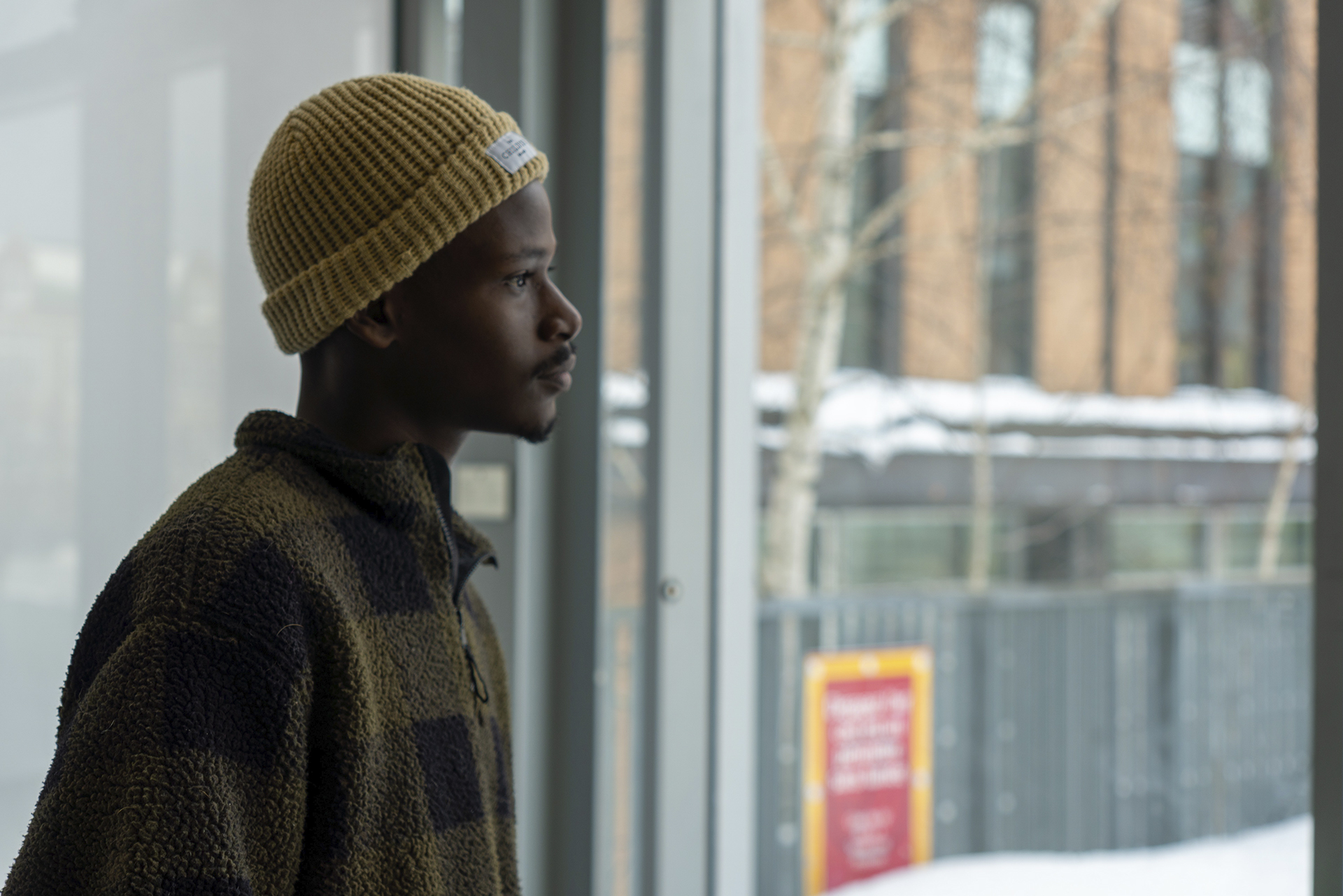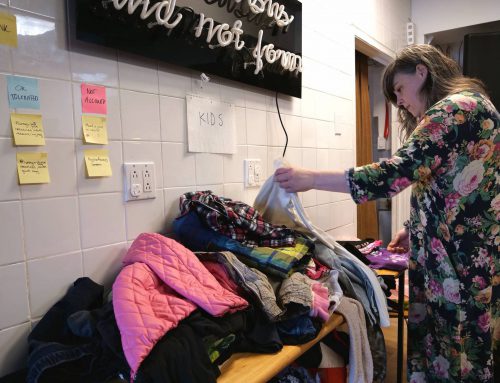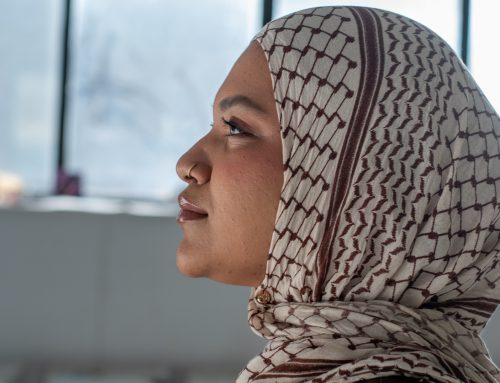Massimo Baruffa & Cedric Gallant
Tyrelle Anasara-Diab lived with his mother and grandmother for the first dozen years of his life. He remembers the exact time and place when Quebec social services took him from his grandmother.
Anasara-Diab tells the story like it was yesterday.

Tyrelle Anasara-Diab in the CJ building intrigued by the department’s camera set up. Photo by Cedric Gallant.
“I was taken out of her care on graduation day. And I was just in class and got called down,” he says. “The night before, there was a bit of a fight at my house. It wasn’t anything out of the normal because I live in a very dysfunctional powder keg of a home like it was just anything at any moment can set it off. And that’s just a consequence of substances and alcohol.”
Social services originally placed him with the family of one of his childhood friends’ family. He had been close with them at one point, but it had been a couple of years since they talked. The government had performed a police check on the family and believed it would be okay to send him there. But, Anasara-Diab had only been there a couple of months when there was a falling out.
He says the fit was not right. Thankfully his best friend’s family took him in and he has been there ever since. However, this is when he started to see problems with the system.
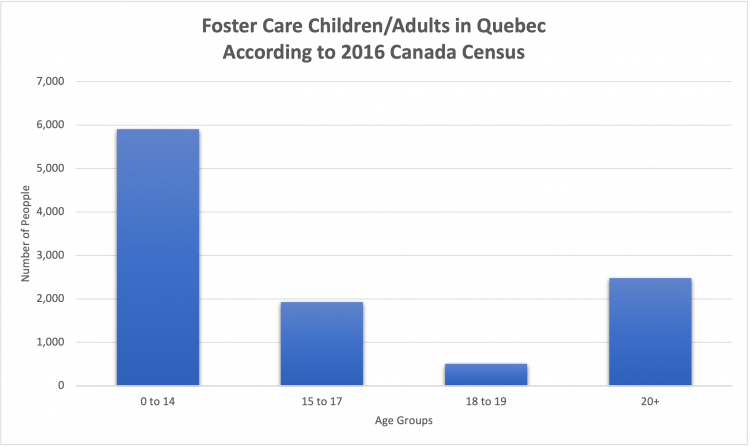
Age ranges of people in Foster Care in Quebec. Media by Massimo Baruffa.
The family never got any monetary support from the government.
In fact, correspondence made it clear that the government had no idea where Anasara-Diab was living or who was taking care of him.
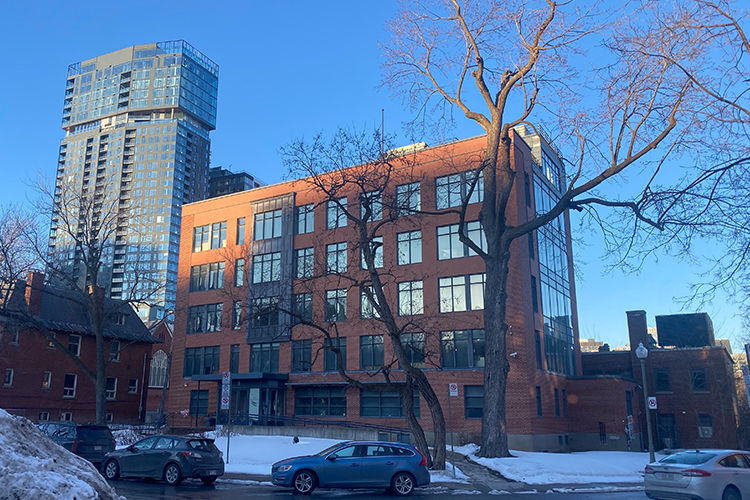
Batshaw Youth and Family Centres in Montreal, Canada. Photo by Massimo Baruffa.
Dr. Varda Mann-Feder worked as a Consulting Psychologist in the child welfare system for almost 30 years. She agrees there are definite problems the system still needs to overcome.
“The foster care system tends to be very controlling of young people in their care, and adolescents do not have many opportunities to experiment with independence,” says Dr. Mann-Feder.
She also says it needs to do a better job of preparing youth for leaving their foster family.
“The foster care system used a rigid age-related definition of when young people are ready to transition to adulthood,” she says. “Not only is this not individualized so that individual maturity levels are not considered, the average young person is not ready to be on their own at 18. Statistics indicate that your average Canadian stays in the family home well into their twenties.”
Fetal Alcohol Spectrum Disorder(FASD) is prevalent in the Foster System. Video by Cedric Gallant.
Anasara-Diabs’s problem with the foster care system also had to do with the stigma it created with his peers and teachers growing up. He feels he was treated differently simply because of the label “foster kid.”
“I’m hearing teachers talking about things that I told my therapist. It’s like, I never had room to actually learn to express it without feeling like it was actually being used against them,” says Anasara-Diab.
He says that teachers and other students expect kids who go through the foster system to be different and need to be treated differently. Young kids will make fun of anyone different from them so he had to devise strategies to help avoid stigma.
“I’m taken out of school once a week in the middle of school, to go to therapy. Now, everybody knows why I’m leaving school every week, and then I have to deal with the therapist,” says Anasara-Diab. “Then I have to deal with the social worker coming to meet me after school to take me from high school. My mom was like ‘You’re not coming into the school to get him. You can meet him outside the gate. He knows what your car looks like, he’ll meet you at the car.’”
